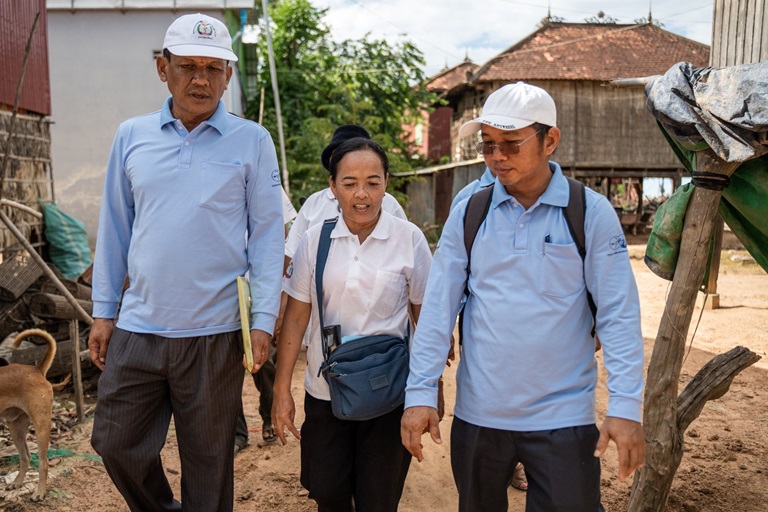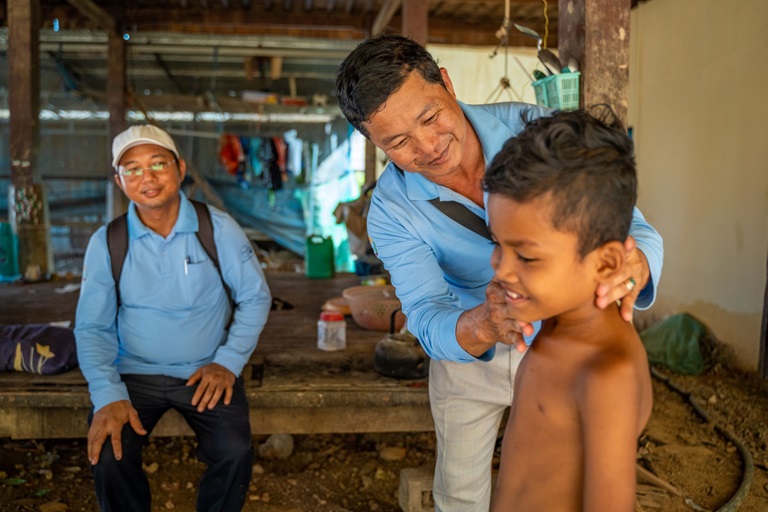So Visal is a physiotherapist in Cambodia who has been working with people affected by leprosy for close to 25 years. “Leprosy is found in the community,” he explains. “We work closely with communities to identify any new cases.”
So Visal’s team at Cambodia’s National Center for Tuberculosis and Leprosy Control spend most of their time building relationships and working directly with village chiefs, health centre staff and community members. They provide information about leprosy prevention and dispel myths to reduce stigma. “When we reach out to communities, we have fun,” says So Visal. “We work together. We cooperate. We laugh. And we share knowledge.”
When So Visal is not in the community, he shares information with people affected by leprosy using digital communication tools, like Messenger. He also provides training to community health workers on how to identify cases and interact with people affected by leprosy in non-stigmatizing ways.
For So Visal and the team, it’s important to consider how gender norms, roles and relations shape health behaviours and health worker responses. For instance, sometimes undressing is part of screening for leprosy. So Visal explains that, for some women in Cambodia, it is not culturally appropriate to undress in front of male doctors. In response, the team has worked to meet the needs of women by ensuring that female health workers are part of the screening teams.

(From left) Chhoun Vanna, Eang Soany and Visal So, surveys Chi Pray Village before conducting leprosy screening. WHO/George Jefferies
So Visal and his team go beyond screening and referrals to build respectful relationships based on trust, which reduces stigma and improves the health and well-being of people affected by leprosy. He recalls a person living with significant physical disabilities caused by leprosy who married another person affected by leprosy. “My team could see the challenges they were facing,” explains So Visal. Besides assisting them with their health-care needs, So Visal’s team wanted to work with the couple to address their housing and food security needs, which are two important determinants of health. “We proposed to our supervisors to help build a house for them. We also trained them to raise chickens. This has helped them to live independently.”
Strengthening human resources towards universal health coverage
So Visal’s compassionate approach to respectful care is an excellent example of developing tailored community engagement interventions that promote people-centred primary health care while improving the social determinants of health. But, to scale up such approaches and ensure that everyone has access to robust primary health care, more enabled workforces are needed.
A motivated, competent and trusted health workforce is also central to achieving universal health coverage and meeting the health-related targets of the Sustainable Development Goals.
That’s why the World Health Organization (WHO) in the Western Pacific Region, in partnership with Member States, has developed the Regional Framework to Shape a Health Workforce for the Future of the Western Pacific. The Framework was endorsed at the seventy-fourth session of the World Health Organization Regional Committee for the Western Pacific.
The Regional Framework guides Member States on strengthening human resource policies to align with primary health care-oriented health systems that are appropriately funded, with a focus on supporting health workers and institutionalizing life-long learning.

A boy is checked by a health worker in Cambodia for leprosy. WHO/George Jefferies




